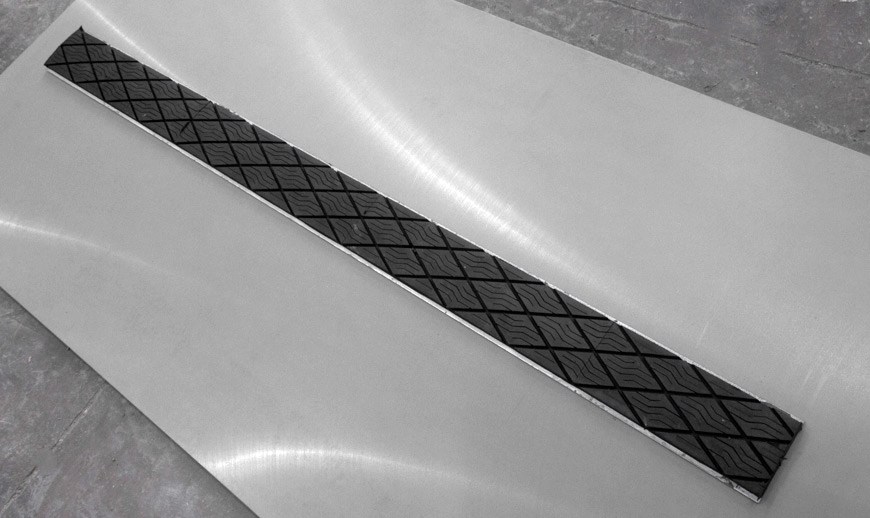Drum Lagging
Products Menu
Useful Documents
Services
CONTACT DETAIL
QPI Limited
Telephone: 01530 265 900
Email: sales@qpiltd.co.uk
24 Hour contact: (+44) 7811 400400Gallery of images
Drum Lagging
Drive drums are carefully lagged to ensure optimal traction and eliminate belt slip, enhancing the efficiency and reliability of conveyor systems.
We offer a range of drum lagging options to cater to various requirements:
– Plain rubber 60 shore: Provides additional wear protection for tail drums and clean side snubs.
– Plain 40 shore: Ideal for preventing cake build-up on dirty side snubs.
– Diamond pattern rubber: Suitable for most applications, offering reliable traction.
– Slide/Weld-on steel and rubber strips: Designed for limited space installations.
– Ceramic: Offers exceptional traction for situations requiring enhanced grip.
With these diverse lagging options, we can accommodate different operational needs and environments. Whether you require wear protection, anti-cake properties, or specialised traction, our drum lagging solutions ensure optimal performance for your conveyor system.
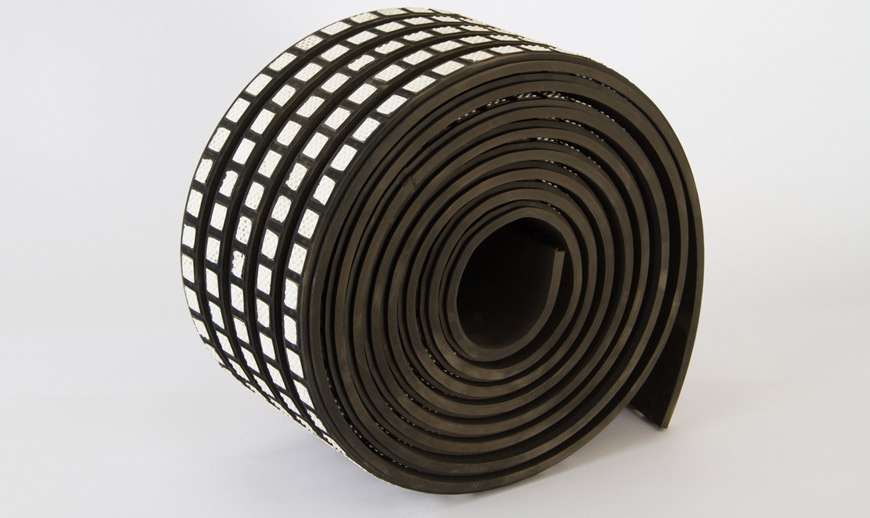
Anti-Caking & Plain Lagging
Our plain anti-caking lagging is made from a softer compound, typically measuring 40-50 shore hardness. This specific formulation has been carefully developed to address common challenges such as material build-up that can damage belts and joints. By utilising this lagging, you can effectively minimise material accumulation and its negative effects.
Additionally, the plain anti-caking lagging plays a crucial role in reducing the build-up of dirt on side drums. This build-up of dirt, if left unchecked, can significantly impact the tracking of belts. However, our lagging solution helps prevent such issues by minimising dirt accumulation and maintaining proper belt alignment.
By incorporating our plain anti-caking lagging into your conveyor system, you can enhance belt longevity, reduce maintenance requirements, and ensure smooth and reliable operation.
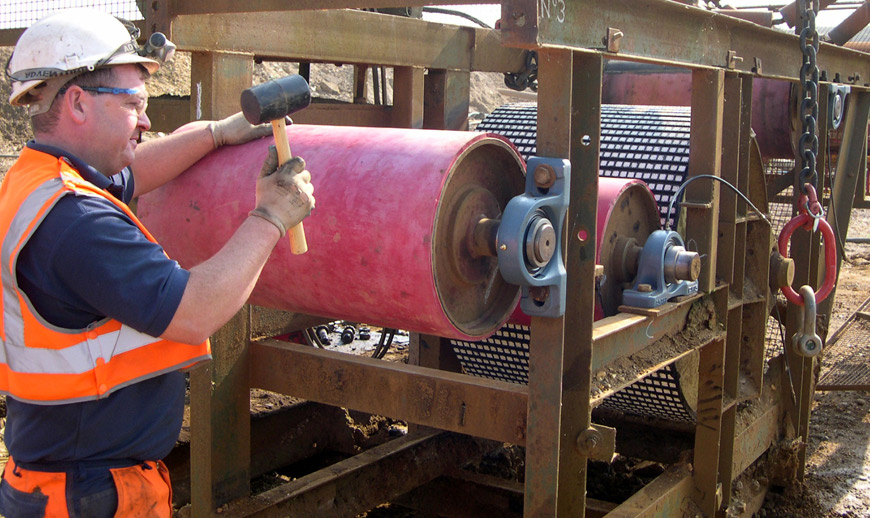
Autoclaved Lagging
Autoclaved lagging is a highly preferred option for many installations due to its exceptional performance. This lagging process is conducted off-site using an autoclave, resulting in a rubber covering with a seamless finish and unparalleled adhesion.
Advantages:
1. Excellent seamless finish: Autoclaved lagging can achieve a flawless result even if the drum face is not in optimal condition.
2. Unrivalled adhesion: The rubber covering adheres exceptionally well to the drum surface, ensuring long-lasting performance.
3. Flexible thickness: Autoclaved lagging allows for the installation of rubber of any desired thickness, catering to specific requirements.
4. Versatile profiles: Virtually any profile can be achieved with autoclaved lagging, ensuring compatibility with diverse conveyor systems.
Disadvantages:
1. Drum removal: With autoclaved lagging, the drum needs to be removed from the site and returned a few days later. This process may result in some downtime during the lagging installation.
Despite the temporary inconvenience of drum removal, the advantages of autoclaved lagging, including its seamless finish, strong adhesion, flexibility, and versatility, make it an excellent choice for optimal conveyor performance.
Ceramic Lagging
Ceramic lagging is the ideal solution when belt slippage becomes a persistent issue that standard lagging fails to address. It consists of ceramic tiles with a raised profile pattern, which are molded into a rubber backing. These ceramic tiles effectively embed themselves into the underside of the belt, providing positive traction without causing abrasion.
The unique design of ceramic lagging offers significant advantages:
1. Enhanced traction: The raised profile pattern of the ceramic tiles significantly increases the coefficient of friction, providing three times the purchase compared to rubber lagging. This ensures superior gripping power and minimises belt slippage.
2. Non-abrasive: The ceramic tiles are engineered to provide traction without causing abrasion or excessive wear on the belt, preserving its longevity and performance.
3. Positive embedding: The tiles firmly embed themselves into the belt, creating a secure and reliable connection that effectively prevents slippage.
By utilising ceramic lagging, you can overcome belt slippage challenges and improve the overall efficiency and reliability of your conveyor system. The superior traction and non-abrasive nature of ceramic lagging make it an excellent choice for applications where standard lagging falls short.
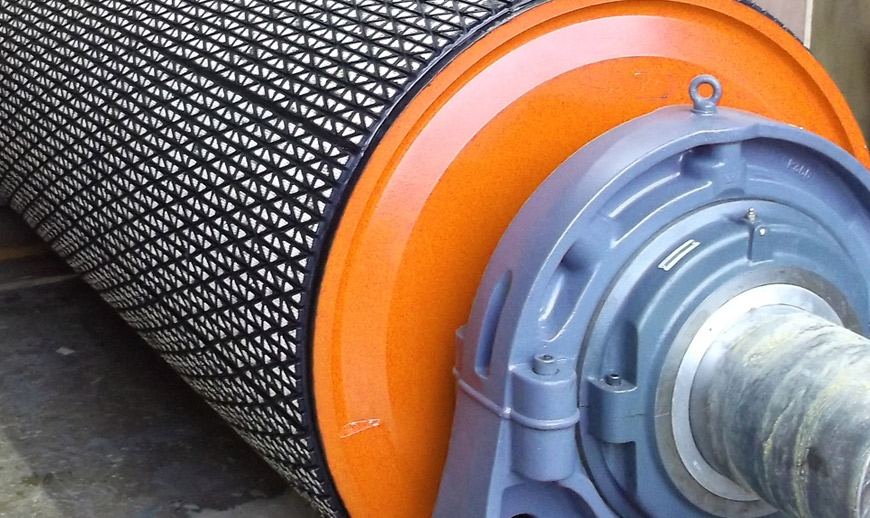
Diamond Lagging
Diamond lagging has emerged as the acknowledged industry standard for conveyor systems.
Advantages:
1. Cost-effective: Diamond lagging is a relatively inexpensive solution compared to other options available.
2. On-site installation: In most cases, diamond lagging can be performed on-site and in situ, minimizing downtime and logistical challenges.
Disadvantages:
1. Resurfacing requirement: To ensure good adhesion, the drum surface may need to be rescored before applying diamond lagging.
2. Unsuitable for wet or damp conditions: On-site installation of diamond lagging is not feasible in wet or damp environments due to curing limitations.
3. Minimum curing time: The lagging requires a minimum curing time of 8 hours for optimal performance.
Despite the need for drum resurfacing and limitations related to wet conditions and curing time, diamond lagging remains the industry standard due to its cost-effectiveness, on-site installation convenience, and available pattern variations. It offers a reliable solution for enhancing traction and reducing belt slippage in conveyor systems.
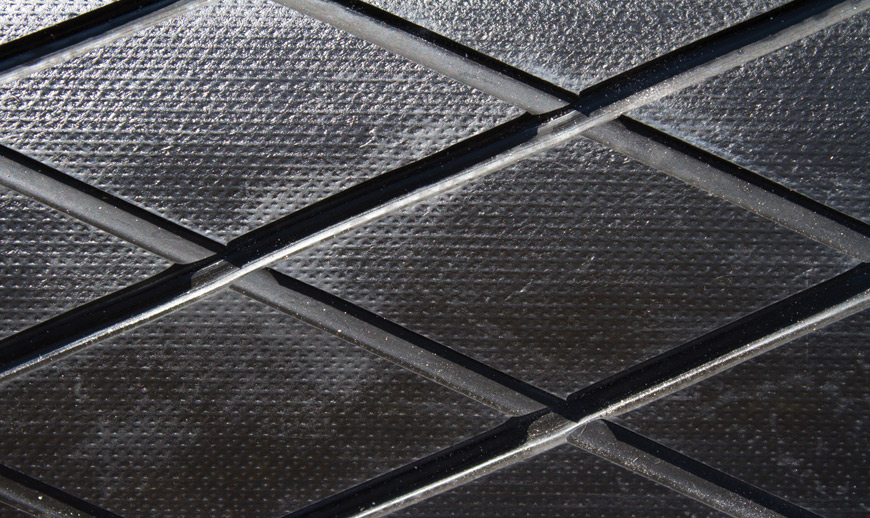
Slide Lagging
Slide lagging is the preferred choice when access to the drum face is restricted, making it difficult to apply conventional lagging. This solution allows for effective lagging installation even in challenging circumstances.
The process involves welding retainers onto the drum face, creating a secure base. Rubber-faced steel pads, curved to match the contour of the drum face, are then slid into these retainers. This innovative design ensures optimal traction and belt grip.
